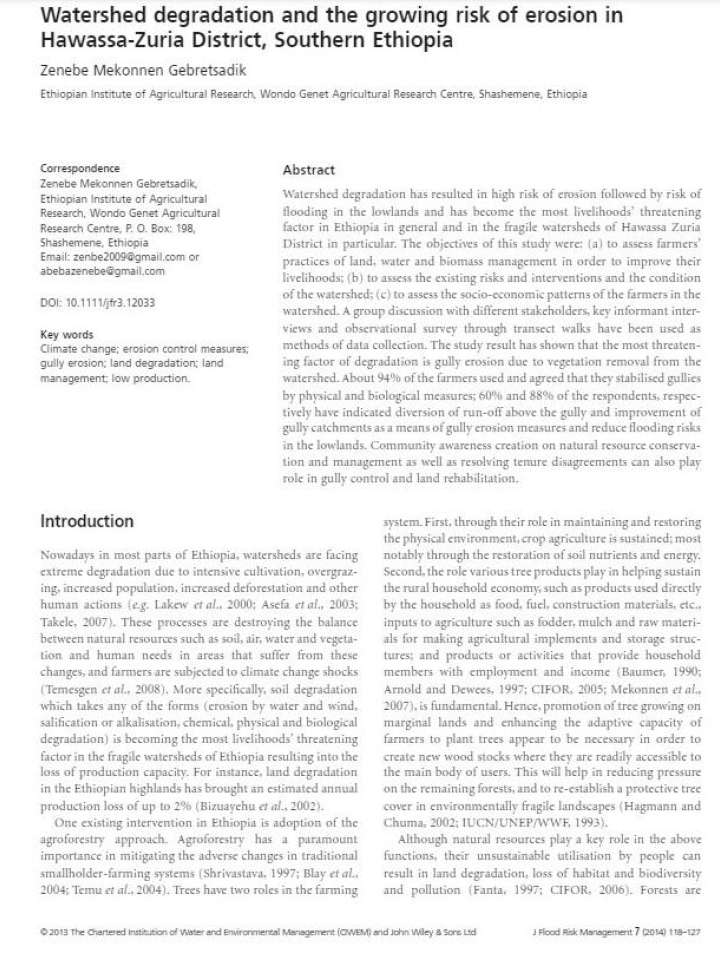Watershed degradation and the growing risk of erosion in Hawassa‐Zuria District, southern Ethiopia
Watershed degradation has resulted in high risk of erosion followed by risk of flooding in the lowlands and has become the most livelihoods' threatening factor in Ethiopia in general and in the fragile watersheds of Hawassa-Zuria District in particular. The objectives of this study were: (a) to assess farmers' practices of land, water, and biomass management in order to improve their livelihoods; (b) to assess the existing risks and interventions and the condition of the watershed; and (c) to assess the socio‐economic patterns of the farmers in the watershed. The study result has shown that the most threatening factor of degradation is gully erosion due to vegetation removal from the watershed.
The following risk aversion strategies are recommended by the author:
- effective participatory natural resources management planning;
- natural resources policy reforms by local government;
- land use planning rules and regulation by local government as well as local bylaws;
- reclamation of severely degraded watersheds through community participation;
- market‐oriented livelihood support strategy setting by local government;
- setting rehabilitation methods and conservation‐based development strategy that increase land productivity; and
- development of resources valuation models and encouraging payment for environmental services by creating awareness on willingness to pay.
Explore further
